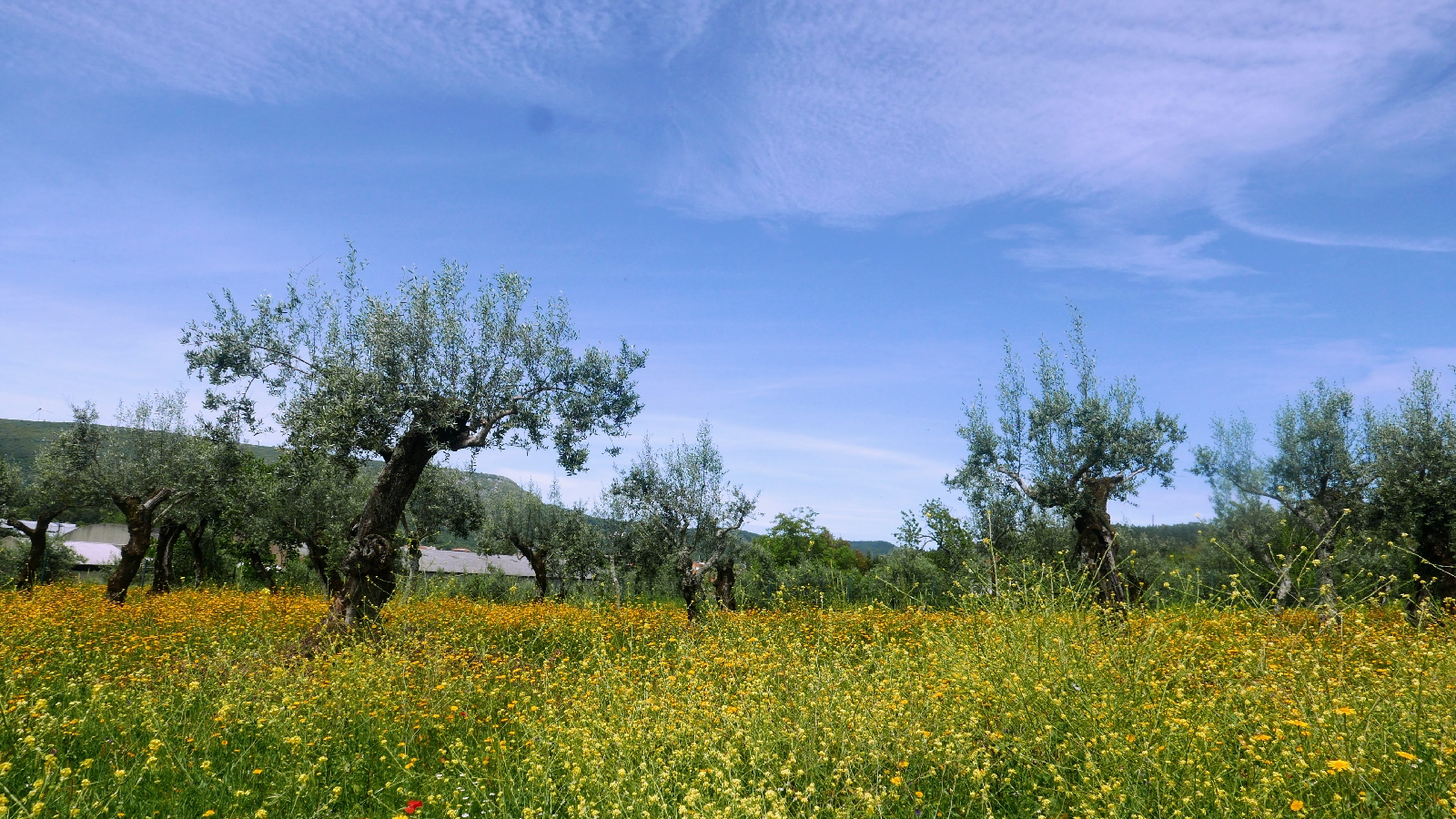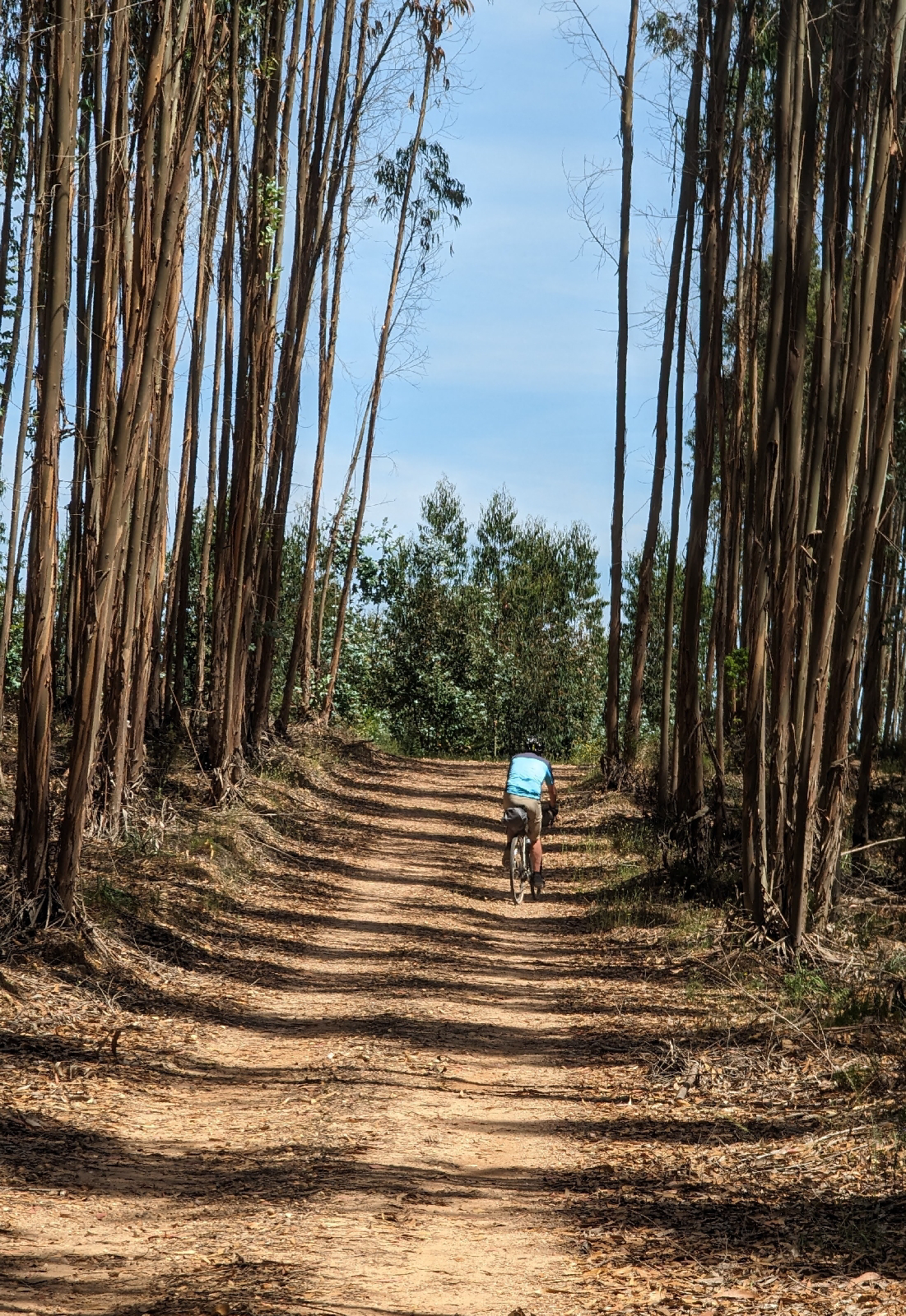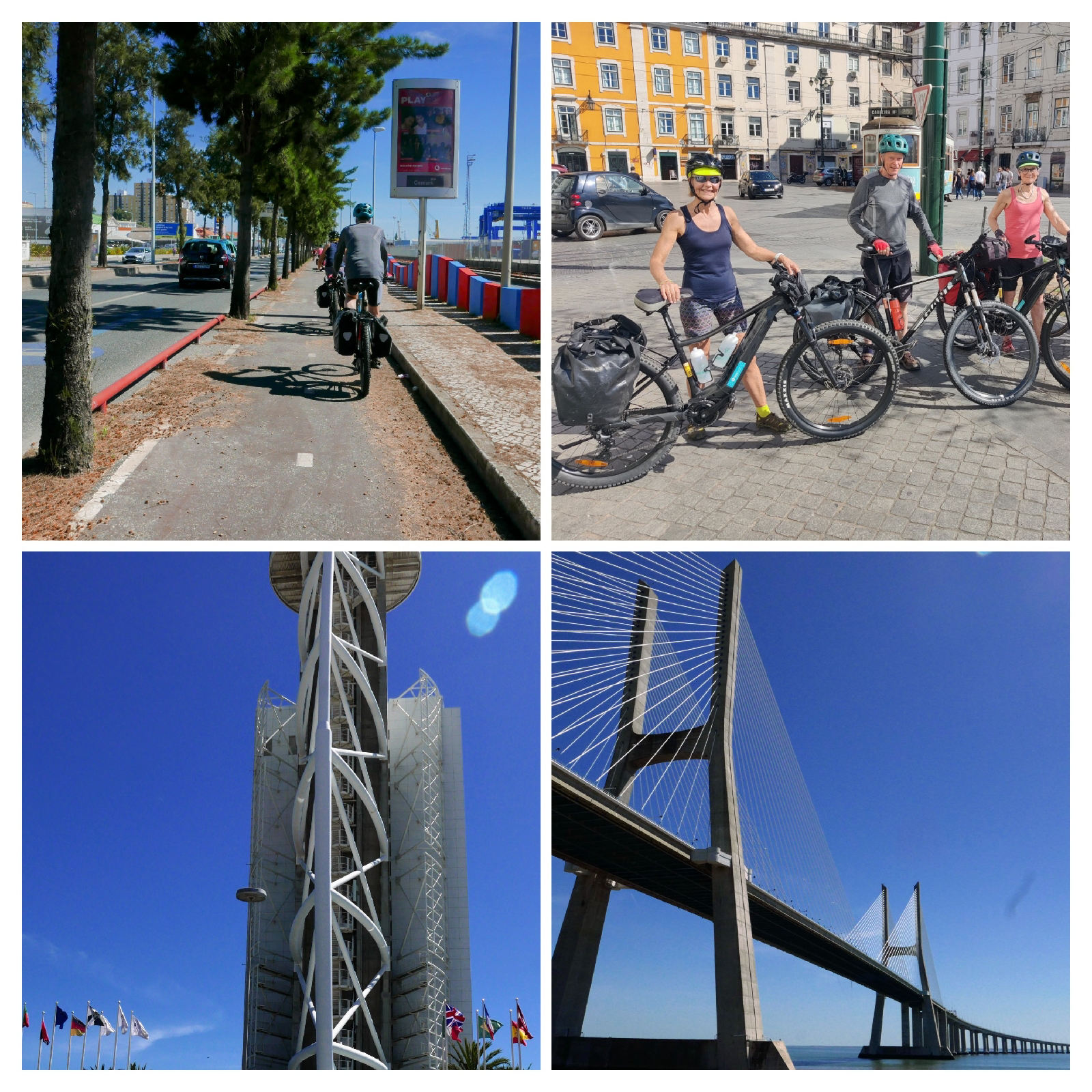Day 4 Camino Portugués Tomar to Ansiao
Day 3 Camino Portugués Santarém to Tomar
Day 2 Villa Franca de Xira to Santarém
Day 1 Camino Portugués- Lisbon to Vila Franca de Xira
Day 0 Camino Portuguese
Tomorrow we set off on a 28 day tour of Northern Portugal and a bit of Northwest Spain. The plan is to cycle the Camino Portuguese Central up to Porto and then onto Santiago del Compestalla, turning round and then heading and back to Porto along the coastal variant of the Camino. After that we'll return along the coast all the way back to Lisbon (taking the Eurovelo along a route I've done before so can vouch for).
I see "we" because as well as Christine, wife and partner on many previous adventures, Mike and Robina will also be making the trip. The four of us cycled across Spain last year on the Camino el Cid and that was such a success that we've decided to attempt an even more ambitious trip in Portugal.
The pandemic already feels distant and it's sometimes hard to remember just how awful it was. but, amongst other things, I got out of the habit of blogging. On this trip I'm going to revive it. It's funny but having to say something about a journey made me think harder about what I was experiencing and the experience was better because of that: so I'm looking forward to this trip.
If cycling the Camino Portuguese "works", if it's likely to be attractive to cycling pilgrims, then I'll write the cycling route up in my 6th Cicerone travel guide. This will be a follow up on to my first Cicerone cycling guide which describes the Ruta Via de la Plata.
Although the Camino Portuguese is not a cycling route like a Eurovelo, plenty of people have cycled it and indeed several holiday companies offer self guided itineraries. The route is particularly popular north of Porto as it's just far enough from Santiago del Compestalla to qualify for pilgrim accreditation.
Exploring the route will involve two cyclists (Robina and Christine) on e-mountain bikes, one cyclist (Mike) on a mountain bike and one cyclist (me) on a gravel bike. The intention is to stick with the Camino wherever possible but pre-identify the really nasty bits and find alternatives. It's already apparent that a lot of the route is "off-road" mostly on forest paths wide enough for a vehicle but some single track. There are stretches where the surface is broken and as neither Robina or Christine are mountain biking experts it's these stretches we'll be trying to avoid.
So from tomorrow night you'll be getting the usual daily updates on progress. If these updates suddenly stop, and previous entries are deleted, please assume the worst. The trip wasn't a success!
Munich to Venice - When to Start
So the idea of walking from Munich to Venice across the Alps has sparked your interest; you've had a look at my blog about how tough it is, and it hasn't put you off; the next question might be "when can I do it?"
Sandwiched between the start and finish of a long winter, the Alpine walking season is short but there does seem to be some debate about how short. Is it two months, July and August, or should you consider a third month, September.
There are four things to think about:
Is it open, or put another way, are the passes clear of snow?
Are the huts (refugios in Italy) open?
What's the risk of bad weather?
How crowded will it be and how easy is it find accommodation?
Long-distance hikers heading south over the Alps need to cross a series of high-level passes. Although the snow will have disappeared from the valleys, and local walkers will be out looking for early signs of spring, in all probability the paths across the passes will be blocked until into July (varies from season to season). So although the huts start to open in June, the hiking season doesn’t really start until July with some risk of blocked passes early in the month.
Mountain walking starts mid-way through Day 3 and finishes on Day 26, so out of the 30 days hiking about 23 are spent in the Alps. Chances are you will stop for three nights in the towns along the route (Hall, Alleghe and Belluno) staying for the rest of the time in mountain huts or small hotels on the passes. The earliest you can start is determined by the snow on the passes and the latest by the availability of accommodation in the mountains towards the end. The last stage of high mountain walking, and perhaps the most remote, crosses the Civetta Dolomites between Alleghe and Belluno and as the huts in these mountains start to close in the last week of September you should aim to start this stage by the 22nd September. So if you want to do the whole Traumpfad, all the way to Venice, you should have left Munich before the end of August.
Snow the on the passes determines the earliest start date and the huts closing the latest, so what about determines the best time?
Weather is a consideration and although it varies from season to season, July and August are the hottest. In August the heat brings a risk of thunderstorms, dangerous if you're exposed on the mountains. Wet weather is always a possibility and if you're high this often means snow, even in August, and although the snow doesn’t last long staying an extra night in a hut can be the best option. As the heat starts to drop off the risk of thunderstorms declines and September is usually the most settled month.
In the Dolomites in August things get busy, and huts need to be booked ahead, weeks ahead if you’re in a group. It also means that anywhere near a chairlift, on the Sella Massif in particular, will be busy in the daytime. The crowds all disappear before the lifts close and sharing a sunset and a beer in a full hut is a fun way to end the day. Personally however I don’t like having to book ahead preferring scheduling flexibility. If the weather is good and I'm feeling good, than I don't want the day to end preferring to press on through the golden hour before the sun sets to turn up at a hut confident it will be only half full. This means avoiding August.
July, August or September are all great months to make the trip across the Alps, adventure guaranteed but if you’re totally flexible with your calendar there is a lot to be said for getting to Munich in August, enjoying a couple of days warm-up heading up the side of the River Isar and then getting stuck into the mountains in September.
Update to the GR1 in Aragon - 2023
To be honest I feel mixed emotions when a walker using a guide points out a route change (thanks Amir). On the one hand, a bit of my precious guide is out of date while, on the other, the route is still being worked on and taken seriously. This is exactly what's happened in Aragon in general and Huesca in particular. As part of a 400,000 euro investment in the fabulous Sierra de Guara, the original routing for the GR1 has been diverted just east of Nazarre, southeast through Pardina Seral to Rodellar and then northeast and back up Letosa and Bagüeste before rejoining the original route back to Paules de Sarsa.
The change helps a lot. Although it adds an extra stage, the stages are more manageable. Because of the lack of accommodation, Stage 5 in the guide is huge (12 hours), and although heading south to Rodellar adds the overall distance there is accommodation there (camping, in a refuge, or in a hotel). So instead of Nocito to Paules de Sarsa, as described in the guide, the new recommendation is to go from Nocito to Rodellar (22.7km, 1010m up and 825m down taking an estimated 7h 35m), stop there, before heading to Paules de Sarsa (27.3km 1025m up and 1190m down taking an estimated 9hr 10m).
Follow the link to see the information panel for the route through the Sierra de Guara
Although I haven't walked the new Rodellar bits the report from Amir states that it is excellent although totally empty in March. Rodellar is a major climbing and canyoning destination so it should get a bit busier from April onwards, as the season opens up, but don't expect crowds. One slight regret is that the new route misses out Otin, the biggest abandoned town on the route, but there are plenty of other ones to explore.
As part of the upgrade, which was completed in 2022 and which apparently includes new signage, the available online information has improved since I walked the route 10 years ago. Better still the Aragon GR1 web presence has at least been matched by a similar effort in Catalonia. This means that the GR1 through the pre-pyrenees, from Olite all the way to the coast is now up-to-date and accessible.
Both Catalonia and Aragon are promoting the GR1 as a coast-to-coast walk and while the guide describes how this can be done there is no evidence, as far as I can see, that their enthusiasm is matched by all the regions on the route. As before expect to see signage in the Castile y Leon, the Basque Country, and Navarre but there is still a small gap in Cantabria and a lack of enthusiasm in Galicia and the Asturias.
My guide also heads from west to east whereas the websites go east to west. Finishing at the Mediterranean made sense to me back in 2012/13 but I know a lot of people prefer to follow the sun and head west. I don't think it's a big deal either way although if you're using the guide as your only source of navigation (unwise) it's less useful if heading west.
Although GPX trails for the guide are available on the Cicerone website it makes sense to download them directly from the people who maintain them in Spain via the following links. At some point, the new route to Robellar will get included on the Openmap database and the IGN digital maps but this hasn't happened yet.
https://senderosturisticos.turismodearagon.com/senderos/gr1
https://senders.feec.cat/fem-muntanya/senders/sender/gr-1-sender-historic/































